Level of surfing
Evolved
Quality of surf
Good
Call code
677
Net code
sb
Area
28896
Coastline
5,313 km
Climate
Tropical monsoon; few extremes of temperature and weather
Hazards
Very Isolated, Severe Storms, Difficult Access, Coup / Civil Unrest
Best Months
May - September
Population
478000
Currency
Solomon Islands Dollar (SBD)
Time Zone
(UTC+11)
Special Requirements
Private Beaches, Non tourist Friendly
introduction

Solomon Islands Flag
The Solomon Islands consist of nearly 1000 different islands and are located in the Pacific Ocean east of Papua New Guinea and the capital city is Honiara, which can be found on the island of Guadalcanal. They occupy a strategic location on sea routes between the south Pacific Ocean and the Coral Sea.
It is believed that the Solomon Islands were first inhabited by the Melanesian people thousands of years ago. The United Kingdom established itself as the protectorate of the islands in 1890. In World War II bitter fighting broke out in the form of the Battle of Guadalcanal and self government was evetually achieved in 1976 follow by independence 2 years later.
The main religion following of the Solomon Islands is Christianity at 97% off all occupants.
history

PDH, US Tanks in Guadalcanalduring WW II; 09.05.2006
The Solomon Islands came under a British protectorate in the 1890s. The islands were the scene of many battles during World War II, including the important battle of Guadalcanal.
Following independence in 1978, government corruption and ethnic tensions came to the fore. The Solomons have seen near anarchy in recent years, despite attempts to restore stability. Tensions between the Guadalcanalese islanders and the Malaitan ethnic group have frequently bubbled over to a state of civil war.
surfing
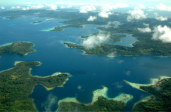
Jim Lounsbury: Solomon Islands; 2007
A pitching deck, the creak of well worn timbers, the cracking of sail and canvas...tied to the mast. Things have changed a little I guess from when Jack London and Josef Conrad wrote their haunting Pacific infused epics but it hasnt changed everythwhere. There are corners of this earth where that mythos still holds true, and most of those corners are here in the South Pacific.
The main source of swell here is from the intense lows that circle the earth south of Australia, these lows spin off northwards with blessed regularity, peppering the entire region with generous SE to SW groundswell from March to September. Australia and New Zealand see the bulk of these swells. These countries cast a very tall shadow across the rest of the Pacific and hence many other islands in their wake can suffer from swell difusion. December to February is cyclone season. Unpredictable cells can deliver swell in a 360 radius, lighting up rarely breaking reefs and points facing every conceivable direction.
The South Pacific trade winds are some of the most consistent in the world, generally from the East with slight seasonal variation. This is the largest Ocean on the planet and these winds easily generate regular rideable swell. Onshore conditions can be a problem on east facing coastlines but peeling yourself out for an early surf will usually bring some relief.
In the North Pacific it is the intense lows descending from the Aleutians that deliver NE to NW swells from October to March. Hawaii is ideally placed to make best use of this energy but other coastlines in the region have their own less publicised and far less crowded gems.
Jun to October also sees rarer hurricane swell radiate out from southern Mexico. This energy is often felt right throughout Polynesia. With so many energy vectors at work it is very hard not to find a wave.
Places such as the Solomon Islands that offer rideable options on every coast will ensure that regadlesss of the conditions, somewhere there will be a wave. In fact quite often there will be a very good one.
travel
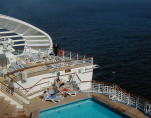
TVerBeek; Cruise ship upper deck; 21.07.2006
The Solomon Islands have one international airport located at Henderson about ten minutes out of the capital city of Honiara. You can fly there on regular services from Brisbane, Australia, Vanuatu, Fiji, and a few other neighbouring South Pacific locations.
Cruise ships often incorporate Honiaraen route around the South Pacific and you can sail there from Southern Bougainville in Papua New Guinea.
where to stay

Jim Lounsbury; Malaitan Chief; 24.05.2007
The Solomon Islands have a full range of accommodation from budget to 5 star luxury including backpackers, motels, hostels, Inns, bungalows, hotels and high end resorts. Many travel agents and companies can custom make a holiday package for you to the islands including flights, transfers and the full range of accommodation available.
what to pack
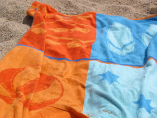
Xavigivax: A beach towel; 13 November 2007
Trainers, loose clothing - everything for the hot weather. Definitely take along some bug repellent spray, good sunscreen and sunglasses! Better take your medicines with you, as the brands can be unfamiliar and cost more. By the way, getting a trip medical insurance would be a good idea.
Malaria is the biggest health issue in the Solomon Islands, so take anti-malarial pills before, during and after stay.
And take a good protection for your camera from the sand.
If you can, bring some things from home for the locals - they will greatly appreciate it!
dangers and warnings
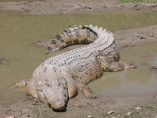
Molly Ebersold; Saltwater Crocodile; Jan 2004
The major thing to protect against on the Soloman Islands is Malaria, make sure you have the correct medication and take before, during and after your trip as directed on the packet.
Saltwater crocodiles also have a healthy population in the Solomon Islands, compared to other South Pacific Islands. While you shouldn't let this ruin your trip, the chances of an encounter are very slim, you should use precaution around any large body of water. The danger here is a lot less than that compared to Northern Australia for example.
restaurants, shopping and nightlife
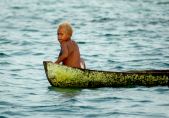
Jim Lounsbury; Solomon Island Fisherman; 24.05.2007
While shopping isn't one of the main attractions to the Solomon Islands there are some very skilled craftsman here who carve some fantastic sculptures from rich black ebony wood or or streaked kerosine wood, both are very hard woods. Things to look out for are crafted sharks, they are a reveared being in the Solomons, believed to be reincarnates of successful fisherman from generations past. These carvings are often decorated with mother of pearl too.
Nightlife here is usually a quiet affair, there are a couple of nightclubs in the capital city of Honiara that open one or two nights a week. Generally you'll be watching the sunset with a cold beer of spirit at a small local bar.
what to do when it's flat
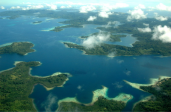
Jim Lounsbury; Solomon Islands from the air; 24.05.2007
The Solomon Islands offers fine scuba diving. In the western province the resorts around Marovo Lagoon cater almost exclusively for scuba divers offering all kinds of dives and training for beginners. A good option is one of the live aboard dive boats.
There are some great scenic hikes arounf the Solomon Islands. A good starting point is the walks from Honiara to Mataniko Falls and Gizo to Titiana. We advise you hire a local guide though until you get used to the area and get some experience, in a lot of areas off the beaten track you will seldom see another white face.
Some resorts offer fishing boat charters and the big game fishing here can be awesome.
useful phrase guide

Indolences; Standard Question Mark; 04.05.2007
The Solomon Islands are home to some 120 different variations on language with most citizens speaking the local Melanesian pigin such as Lingua Franca. English is the official language and is only spoken by around 2% of the population as a first language. However, in most of the regularly visited areas and resorts many locals can speak English.






